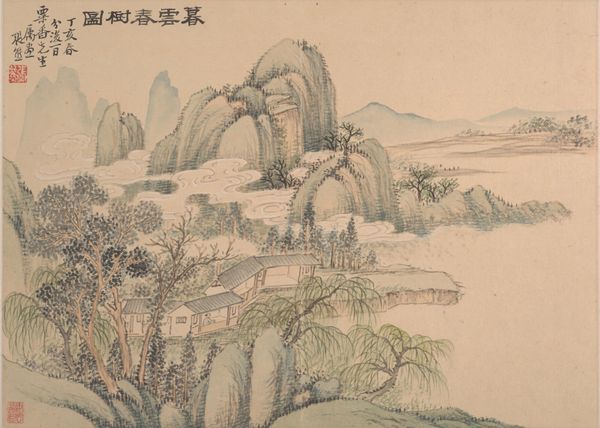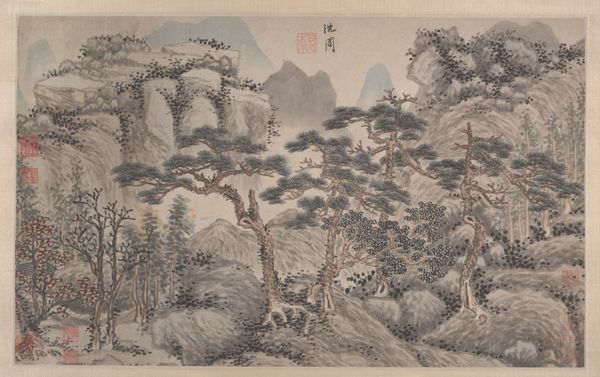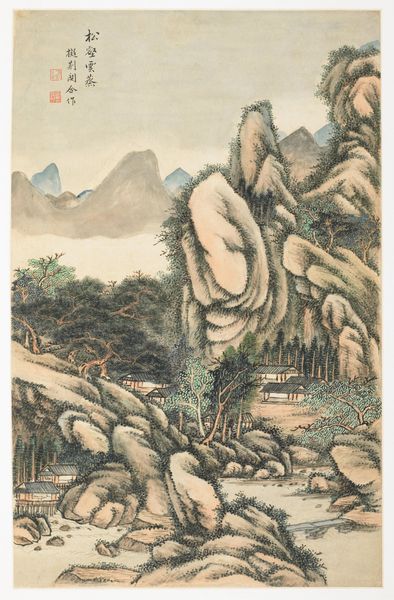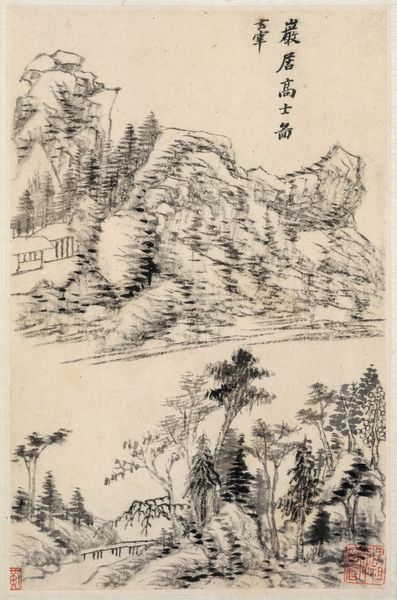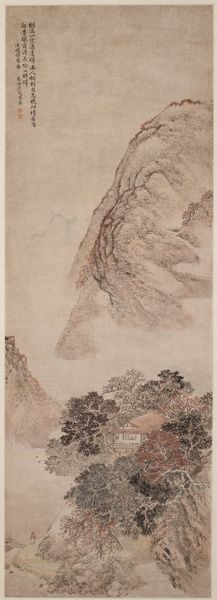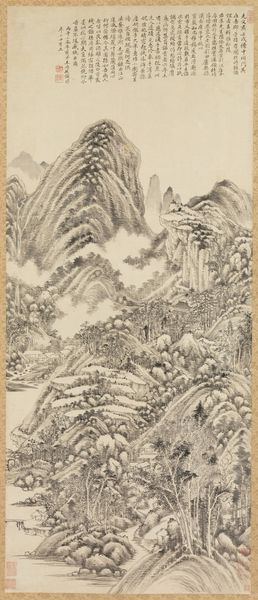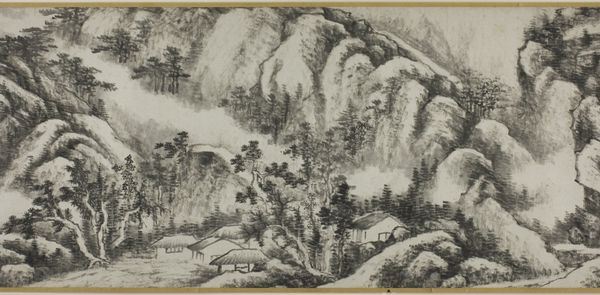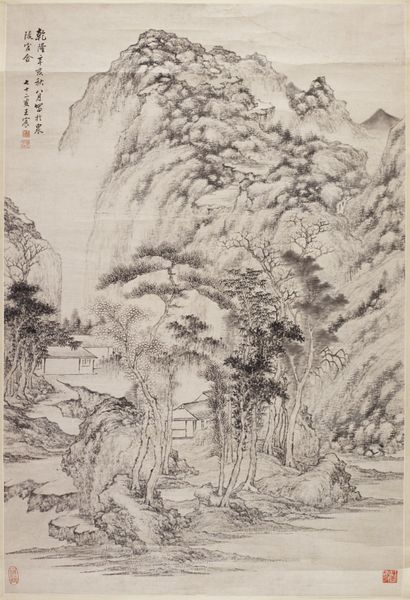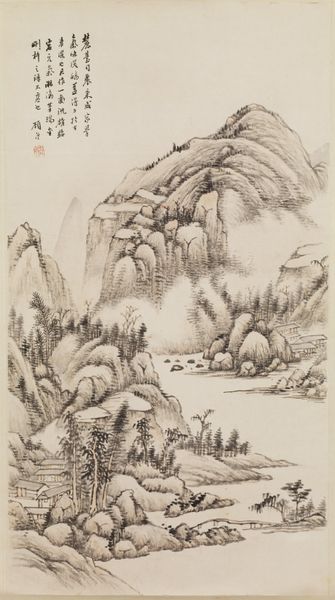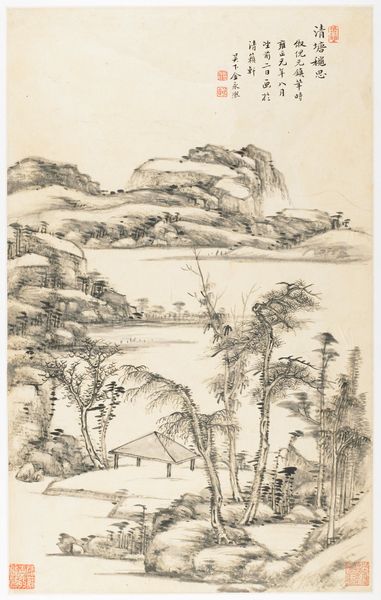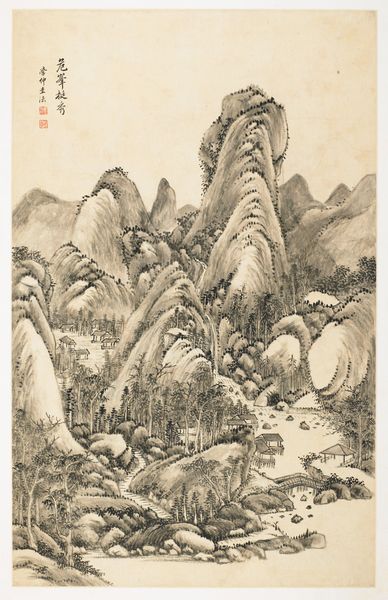
painting, watercolor, ink
#
painting
#
asian-art
#
landscape
#
watercolor
#
ink
#
calligraphy
Dimensions: 21 1/4 x 12 5/16 in. (53.98 x 31.27 cm) (image)
Copyright: Public Domain
Curator: Immediately, the delicacy of the ink and watercolor create an ephemeral feeling. Almost like looking at a fading memory. Editor: Indeed, there’s a wistful air to this. Let’s contextualize it. This piece is titled "Mountain Color on Mount Liangchang," painted in 1723 by Jin Yongxi. The artwork invites us to explore the cultural and historical circumstances surrounding its creation. Curator: Knowing its materials helps, as Yongxi worked in ink and watercolor, allowing for subtle washes and expressive brushstrokes. What’s striking to me is the integration of calligraphy with the landscape, adding a layer of intellectual and artistic meaning that engages both text and image. Editor: That's where I’d start – the integration. I see these tranquil scenes as vehicles to assert status within scholar-official circles. Look at the subtle rendering of houses – it prompts consideration of who has access to land and resources. It subtly interrogates societal hierarchy and control, all through something as simple as a painted scene of buildings nestled into landscape. Curator: Fascinating perspective. I see the rendering of the mountains, their textures and geological form, speaking to the painter's intimate engagement with the land and the material conditions that gave rise to those particular pigments and inks. Was the production of pigments localized? Who processed the raw materials? The artist's hand is involved, of course, but so is the anonymous labor involved in this work's creation. Editor: Absolutely. Understanding these power dynamics enhances our understanding and highlights how Yongxi engages the socio-political narrative of his time. It’s not just landscape; it is a constructed visual text that carries layered meaning, intentionally or unintentionally. This artwork uses conventions that create the image of serenity while implying tensions rooted in ownership and social identity. Curator: It's that very tension, between the visual ease and potential implied social commentary, that adds depth to understanding Yongxi's methods and place as a cultural worker. This act of representation itself holds social significance. Editor: A critical engagement allows a painting of mountains not just to offer escape, but provoke crucial conversation about how art participates in cultural conversations. Curator: I'm glad we've found multiple inroads, considering the various hands involved in its creation. Editor: It helps me consider this work as less a static image, and more of a site for engaging complex ideas around social, environmental, and political consciousness.
Comments
No comments
Be the first to comment and join the conversation on the ultimate creative platform.

